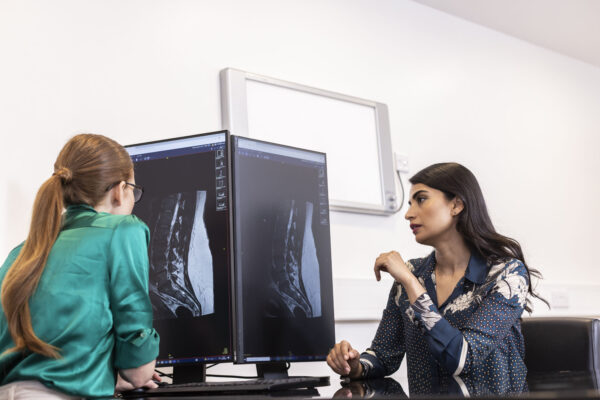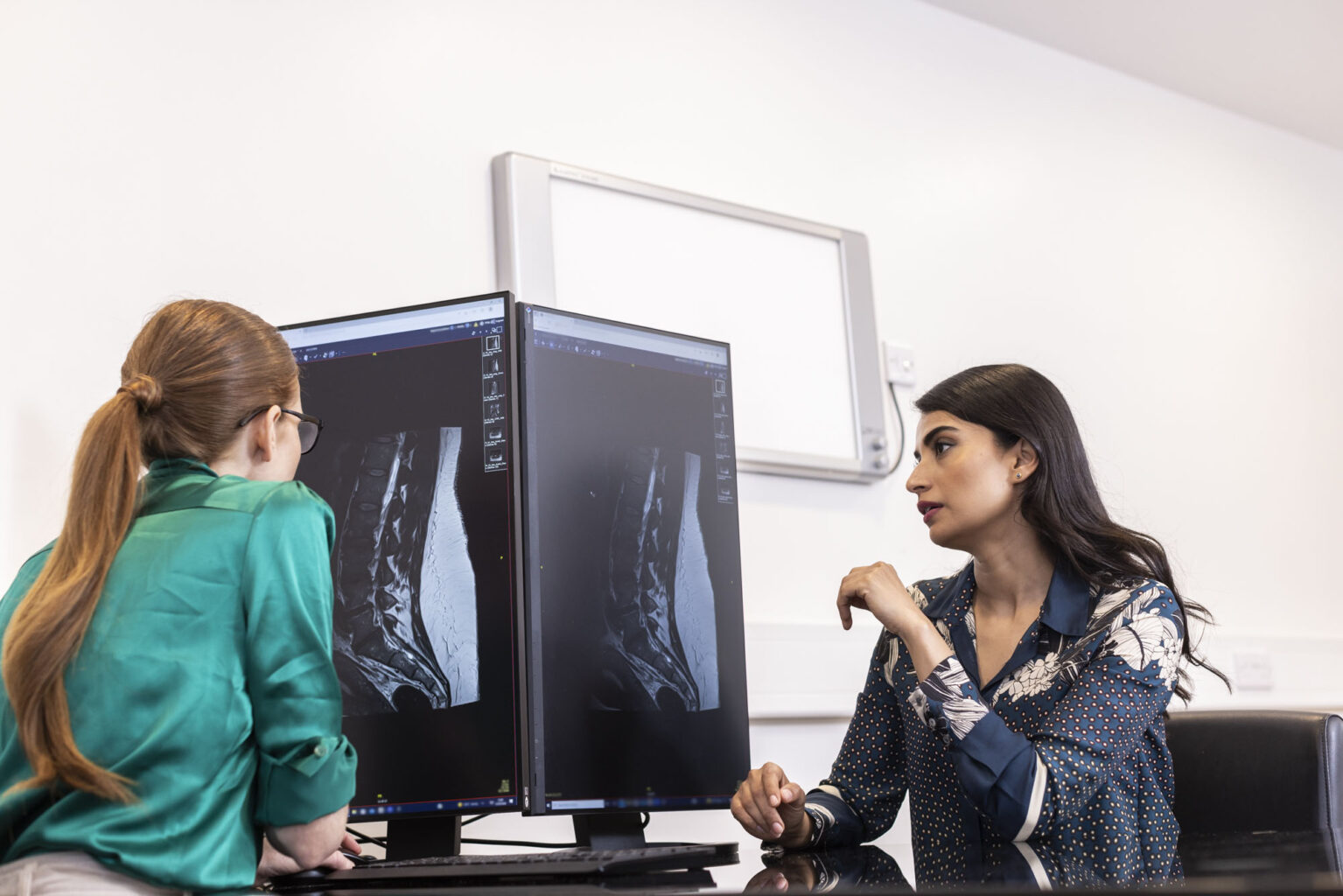Contact number: 020 7806 4060
What Is Prosthetic Disc Replacement?
Prosthetic disc replacement involves removing a damaged or worn-out disc from the spine and replacing it with an artificial disc made of metal, plastic, or a combination of both. This procedure aims to maintain natural spinal movement while relieving pain caused by conditions such as:
- Degenerative disc disease
- Herniated discs
- Chronic back or neck pain that hasn’t improved with non-surgical treatments
The surgery is typically performed on the cervical (neck) or lumbar (lower back) spine and offers a less restrictive alternative to spinal fusion.
Prosthetic Disc Replacement at St John & St Elizabeth Hospital
At St John & St Elizabeth Hospital, we offer prosthetic disc replacement as part of our compassionate spinal care services. Our specialists use advanced techniques and tailor each treatment plan to the individual needs of our patients.
Why choose us for prosthetic disc replacement?
- Specialist Spinal Surgeons: Our consultants are highly skilled in performing disc replacement surgery to relieve pain and restore movement.
- Personalised Care: We create treatment plans tailored to your condition and recovery goals, ensuring care that suits your individual needs.
- Modern Facilities: Our hospital features advanced imaging and surgical technology for precise diagnosis and effective treatment.
- Accessible Location: Based in NW8, we serve patients from Hampstead (NW3), Kilburn (NW6), and the wider London area.
We are committed to helping you achieve long-term relief and a return to daily activities through expert, patient-focused care.
Consultants who perform Disc Replacement Surgery in London
How to pay for your treatment
If you’re… paying for yourself
Did you know you don’t need private medical insurance to come to St John & St Elizabeth Hospital? As a self-pay patient, you can access safe, outstanding quality health care at times to suit you.
For scans and tests, as well as to see most consultants, you’ll still need to be referred by a medical professional like your GP, but as a self-pay patient, the process is more straightforward. You won’t need authorisation from an insurance provider, and you’ll have greater choice of consultant and appointment times.
If you’re… insured
St John & St Elizabeth Hospital is approved by all major medical insurance companies. If you have a personal private health insurance policy, or your company provide it for you, you can use it to pay for your care from your initial consultation through to treatment, surgery and aftercare such as physiotherapy. Not all private health insurance plans cover the same things. It’s very important to check exactly what you are covered for with your insurance provider.
Frequently Asked Questions About Prosthetic Disc Replacement
St John & St Elizabeth Hospital is located in St John’s Wood (NW8), a well-connected area of North West London. We are conveniently accessible for patients from Hampstead (NW3), Kilburn (NW6), and beyond.
By Tube:
- St John’s Wood station (Jubilee Line) is just a 5-minute walk from the hospital.
- Finchley Road (NW3) and Kilburn stations (NW6) on the Jubilee Line provide excellent connections.
By Bus:
- Wellington Road: Routes 13, 46, 82, and 113 stop near St John’s Wood Underground Station, just a short walk from the hospital.
- Circus Road: Routes 46 and 187 stop close to the hospital’s Circus Road entrance.
- Abbey Road: Routes 139 and 189 stop near the junction where Grove End Road becomes Abbey Road, providing easy access.
Major Roads:
If you’re travelling from NW3 or NW6, major routes such as Finchley Road or Kilburn High Road offer a direct approach to the hospital.
Before your surgery, you will have a consultation with one of our specialist spinal surgeons to assess your medical history, symptoms, and imaging studies (such as X-rays or MRIs). You may need to stop taking certain medications, including blood thinners, prior to the procedure. Detailed pre-operative instructions will be provided, including advice on fasting, lifestyle changes, and any other necessary preparations to ensure a safe and successful surgery.
The procedure typically takes 1 to 3 hours, depending on the location of the damaged disc and the complexity of the surgery
The procedure is performed under general anaesthesia, so you won’t feel pain during surgery. Some discomfort is normal during recovery, but this can be managed with pain relief medication and physiotherapy.
Most patients can resume light activities within 2 to 4 weeks. Full recovery, including returning to work and physical activities, typically takes 6 to 12 weeks, depending on your individual progress and physiotherapy programme.
After the surgery, you will be monitored in a recovery area to ensure you are stable and comfortable. You may experience some soreness and swelling around the incision site, but most patients report significant pain relief once the procedure is completed. Physical therapy will be recommended to help restore strength and flexibility in the spine, and you may gradually return to normal activities over the course of a few weeks to months. You will be provided with post-operative care instructions to ensure optimal healing and recovery.
Prosthetic disc replacement is suitable for patients with chronic neck or back pain caused by disc damage that hasn’t responded to non-surgical treatments. Your consultant will assess your condition to determine if this procedure is the right option for you.
Artificial disc replacement is highly successful for many patients, with success rates exceeding 80-90%. The procedure effectively relieves pain, restores mobility, and preserves natural spinal movement, making it a reliable alternative to spinal fusion for suitable candidates.
Yes, most patients can walk shortly after artificial disc replacement surgery, often within a day. Walking is encouraged during recovery to promote healing and restore mobility, but your activity level will be gradually increased based on your consultant’s guidance.
Follow-up appointments will be scheduled to monitor your recovery, check for complications, and assess the effectiveness of the artificial disc. Imaging studies may be used to ensure proper placement of the prosthetic disc and that the spine is healing well. Your doctor will provide guidance on any necessary adjustments to your physical activity level and recommend physical therapy to help restore function and mobility in your spine.


